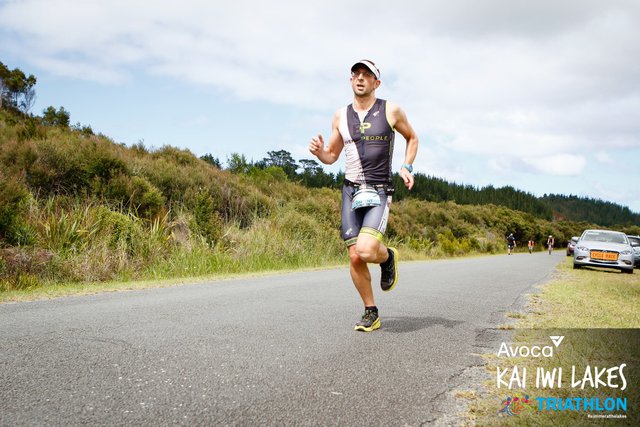Improving Your Lactate Threshold With The @runningproject
If you've been following along, you may have noticed I've been running a few marathons lately, but before my first marathon in April, I did an 8km race and was a little dissapointed with myself. Needless to say a lot of my running was directed towards running a fast marathon. This did include some speed work with some short repertions, but my 8km race made it clear I was lacking higher end speed over a longer period of time. I got through the first 5km in just under 20 minutes but the last 3km were kinda ugly. With my marathon season over and technically I'm in an off season, I looked over my training and saw there was a lack of work at my lactate threshold pace which could have made things a little more confortable for those last 3km of my race.
With my off season now in full force I thought it would be a great time to improve my lactate threshold as well as have an extended discussion on the subject for the @runningproject.
So What Is Lactate Threshold
We know how that when we run, we use either our anaerobic system which breaks down glueclose to fuel our body or our aerobic system which uses oxygen to utelise our fat stores. Your aerobic training zone will usually start low at about 120 beats per minute. Where your aerobic training zone ends and your body starts to utelise its anaerobic training zones is where your lactate threshold is. As gluecose is broken down, lactic acid is released and as you increase the pace, it will begin to accumulate in your blood faster than your body can clear it out.
Lactic acid can also be burned in different parts of the body to produce more energy after having been shuttled from the muscles. When a runner is trying to improve their lactate threshold, they're basically trying to improve the way their body uses lactic acid as fuel for their runs. By improving your lactate threshold, it will allow you to increase your pace over short to mid range distances and adds a kick to your sprint towards the end of a race or surge during the middle of a run.
Finding Your Lactate Threshold Pace
Everyone's lactate threshold will be different but it's a pace a runner can keep for several kilometers and it doesn't feel like they're going all out. In our previous posts, we've been using the Jack Daniels' VDOT calculator to provide the pace we are using and this is a perfect way to calculate your lactate threshold pace:
https://runsmartproject.com/calculator/
The above method is fine, but you do need to have a current race time to get current training paces, but there are other ways of getting your lactate threshold pace. This could include booking time at a physiology lab or purchasing a personal lactate analyser, which both can be expensive. Research from the university of East Carolina suggests that a 30 minute run test is a reliable way to test your lactate threshold pace and can be performed through out the season to make sure your improving.
To perform the test, make sure you are feeling good and well recovered. Start by warming up for 10 to 15 minutes, then start to run at a pace that you will only be able to run for 30 minutes. This is when you start your timer and you start your 30 minute run test. At the end of the test, you'll need to know the amount of distance you covered over that 30 minutes, so you will need to use a GPS watch, or run around a track or marked course.
When you have the distance you've covered in the 30 minutes, you can then divide the results in meters by 1,800 seconds, which will give you a meters per second result for your lactate threshold pace.
For example, if you ran 5km(5,000m) in 30 minutes, your results would be:
5,000 meters/1,800 seconds = 2.7 meters per second
Your lactate threshold for any distance would then be the distance divided by your lactate threshold pace. Eg;
1,200 meters/2.7 = 444 seconds or 7 minutes and 40 seconds
Implementing Lactate Threshold Pace Into Training
When using this pace as part of your training, it is best to start out with intervals, with the goal of these workouts to eventually get to the point where you can run that pace for a long time. At the beginning though, this may be difficult, so hopefully intervals of about 1,200 meters will not be too difficult.
The aim of the session will be to run slightly faster than your lactate threshold pace. With our example above, we could then look at doing the interval about 10 seconds quicker than our lactate threshold pace overt the same distance. This would have us running at about 7 minutes 30 seconds per interval, and we would then rest for about a minute before repeating this again for 4 to 8 sets.
With my training, I am trying something a little different, I am actually using the 30 minute run test as a training session each week and it's surprising to see my body responding so quickly. I know it will eventually plateau, which will be when I need to resort to interval training again to further improve.

About the Author
Hey I'm Vince, an Aussie living in New Zealand, trying my best to make the most of the time I have. I work as a Software Engineer but love to run and all aspects of it, including geeking out on the latest science to help get the most out of my body.
For more information about @runningproject please see the latest status report:
https://steemit.com/runningproject/@runningproject/the-steem-running-project-9th-status-report-runningproject-has-reached-300-sp
Post written by @run.vince.run on behalf of the @runningproject

very intereasting article! would love to read more stuff like this!
Then, follow @runningproject initiative ;-)
Hey @manuelachtig thanks for the kind words...Hopefully we will have some more soon.
Regards @run.vince.run
Super interesting. Going to get into my training for another week then try this 30 minute test.
Ive never put much more thought than "30 minutes -- medium fast" for a training run. Intersted to look into creating a bit more structure and direction. I remember how helpful it was to start tracking w/ gps for accurate distsnce and time info!
Hey @mstafford its really interesting that with all the research and information we have, we come back to basics though a lot of the time, just like a 30 minute run as fast as you can.
Regards @run.vince.run
Congratulations @runningproject! You have completed the following achievement on Steemit and have been rewarded with new badge(s) :
Click on the badge to view your Board of Honor.
If you no longer want to receive notifications, reply to this comment with the word
STOPVery informative, thank you for this post! For those who speak french, you can watch this video which explain everything about the body when we run. It's a show for kids so it's easy to understand
Awesome, thanks @romaincrx
Very interesting content.Lots of knowledge are available.